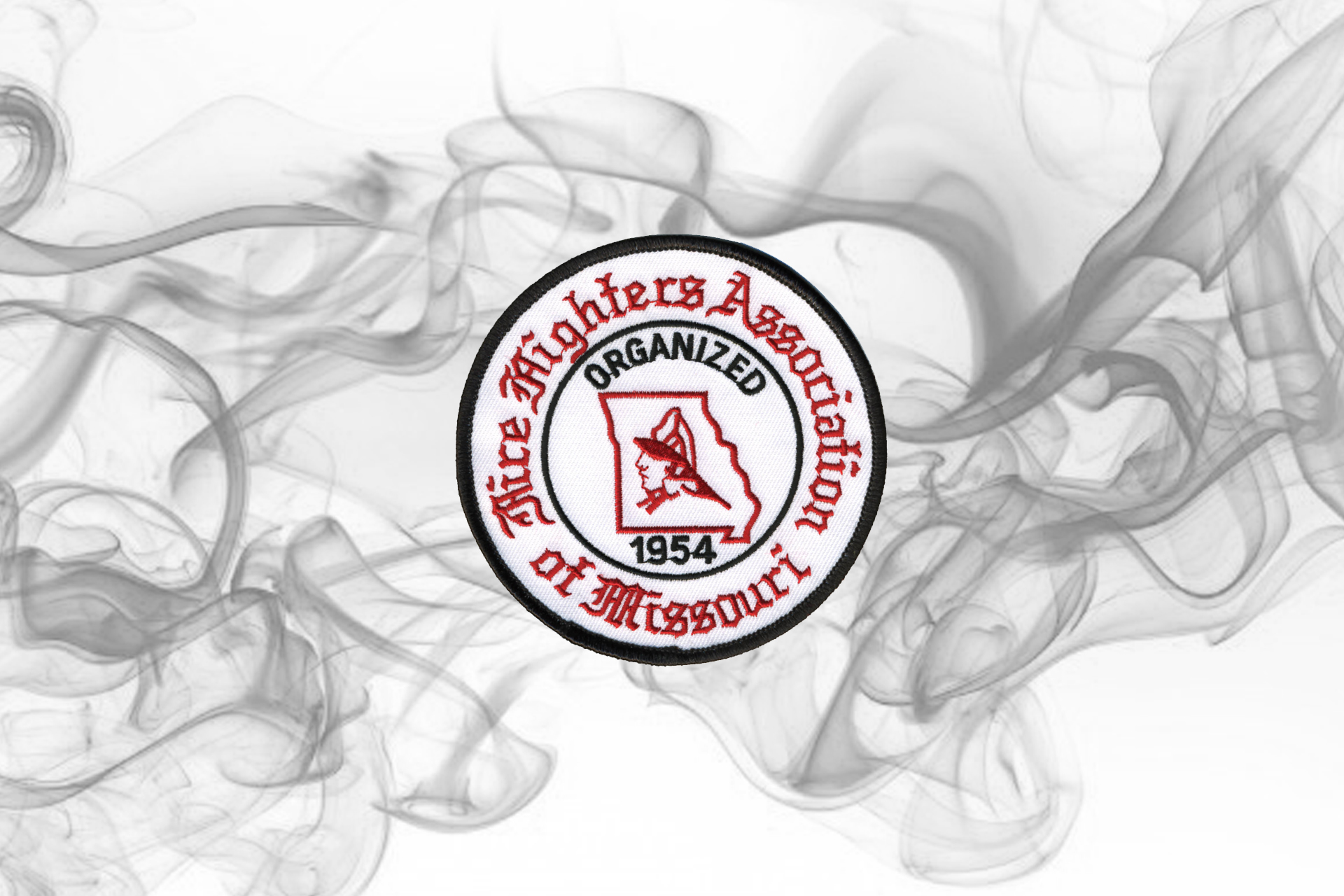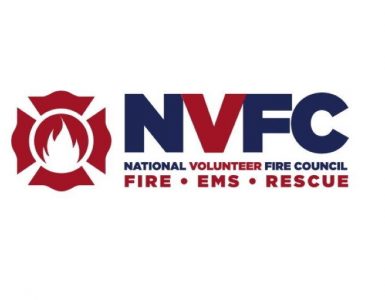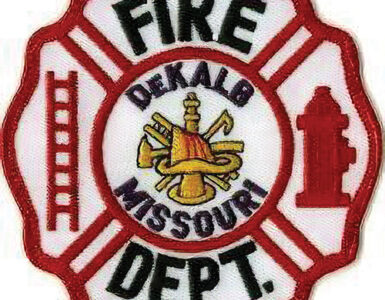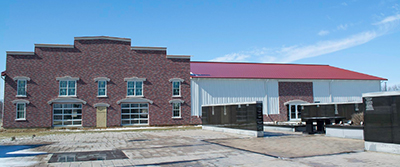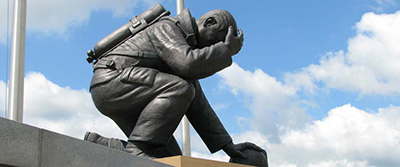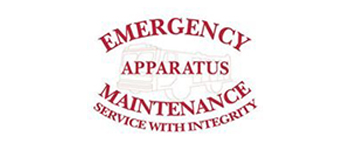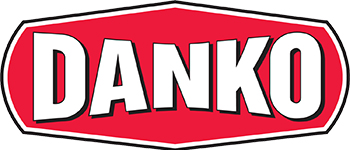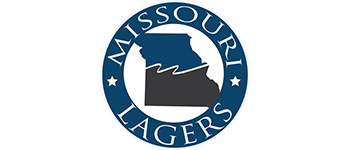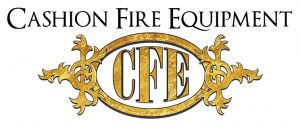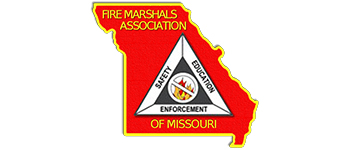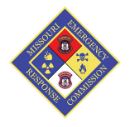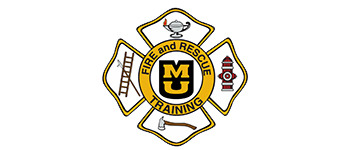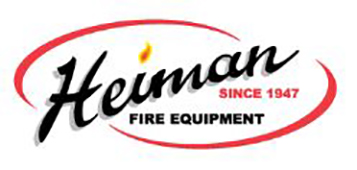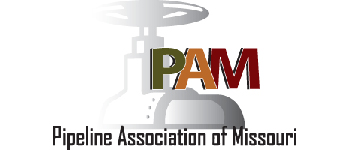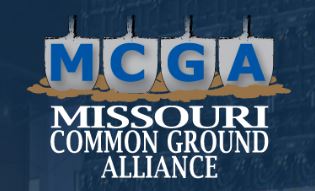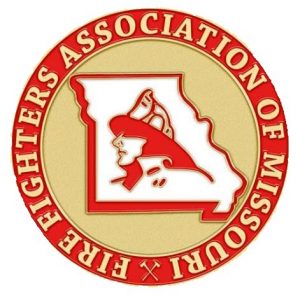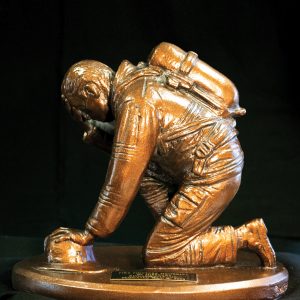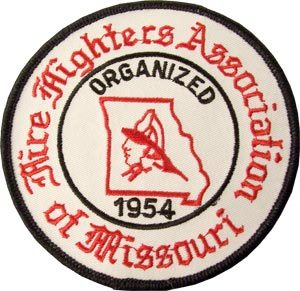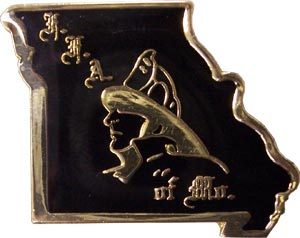A Part of Fire Service History
Most veteran firefighters consider the firehouse, or fire station, as their home away from home. Whether career or volunteer, firefighters spend a significant amount of time at the station, working assigned shifts, voluntary duty assignments, training, meetings, or socializing (just hanging around). Because the firefighter’s assigned fire station becomes that second home, it takes on many of the trappings or accouterments similar to the everyday lifestyle that the personnel share. One of these lifestyle situations is to have a pet at home. In many cases, the fire station is similar to a firehouse mascot or pet. Of course, each fire department is different regarding the policy on allowing animals in the firehouse or the domiciling of pets onsite by personnel.
Fire service history records several endearing pets kept in the firehouse over the early years of the American Fire Service. Of course during the “Era of the fire horse,” many of the firemen of the day might have considered their horse team as prized pets, as well as working animals and teammates.1 However, even during this time, other animals were kept as pets and companions to help pass the time away from family while on duty.
It should be remembered that in the beginning days of a career fireman (firefighter), the occupation required personnel to work full time around the clock and live at the fire station. Firemen were generally granted one hour a day time off to eat a supper meal at home and one day a month of family leave. Other than that, spouses and children had to visit the firehouse if they wanted to see their family members. Talk about dedication to the job! Even volunteer firemen who wanted to be first on the scene, developed the habit of sleeping at the firehouse (bunking) at least several times a week. So it appears only logically that these firefighters would want to bring the companionship of a pet to share their life at the firehouse.
The choice of a firehouse pet is somewhat similar to a family choice that one would have at home, but in this situation, the choice usually has to go through a vetting process by the fire station family unit. Though dogs are popular pets, they are not the only ones found in the firehouse. Other animals such as cats have found a good life at the firehouse. One way an animal gets taken into the firehouse family is by showing up as a stray and getting adopted. However, others are chosen or selected for specific reasons by shift mates.
Though we will find a variety of animals that have served as pets at the firehouse, perhaps the most popular animal is the dog. Though there are many canine breeds found in the firehouse, the one most associated by the public with the fire department is the iconic Dalmatian. The Dalmatian breed, however, has a unique development and history. To understand how this canine became the iconic fire dog, we need to do a brief review of the history of the breed.

The Dalmatian
Just like there is some ambiguity in fire service history, so too is there uncertainty in the history of the development of the Dalmatian canine breed. A common belief is that the breed originated in Dalmatia, which is a “region of Croatia, comprising a central coastal strip and a fringe of islands along the Adriatic Sea.”2 Today it is part of Yugoslavia. Other accounts are that the breed stems from hounds and pointer breeds developed “somewhere around the Mediterranean.”3 Perhaps in Spain. There are depictions of “spotted dogs” in the British Museum dating from the mid-1600s.4
In 1790, Thomas Bewick in his illustrated book A General History of Quadrupeds has a drawing of a dog that looks like and is labeled “The Dalmatian or Coach Dog.” The dog is described as being very common in England, “and is frequently kept in genteel houses, as an elegant attendant on a carriage.”5 Alfred and Esmeralda Treen in their book, The New Dalmatian, state that the Dalmatian “is the only dog that was traditionally bred and trained to run with the horse-drawn vehicles.”6 Because of this, the dog’s accepted job from the very start was “coaching.” As coach dogs, the custom in England was for the “dog or dogs to run directly under the front axle near the horses, but always clear of the horses’ heels. [Also] Running between two horses and under the pole [drive pole].”7 Today this seems like a dangerous practice for the dogs. However, this desire to run in response to the horses would lay the foundation for the next chapter in their working tradition.
Canine Entry into the fire service
As we have seen in this fire service history series, the age of steam brought steam-powered fire pumps into the fire service replacing man-powered pumps. This new age of steam brought many new developments to the fire service and changes to its culture. Over a short period, horses replaced manpower to transport the heavy steam pumpers for rapid response to fires. As was described in the article Fire Poles, A Historic Tradition in the Fire Service, “as horses moved into the stations the men retreated by moving their quarters upstairs.”8 This shortly led to the invention of the fire sliding pole. Also, with the change to horses to haul the fire steamers and other fire equipment wagons, the Dalmatian had its entry into the fire service. As described previously, Dalmatians were bred as coach dogs that had a working relationship and bond with horses and the carriages they pulled. The Dalmatian dog’s ability to bond with horses, along with its physical ability to run pace with the horses, made it a natural firehouse addition.
Just as the firemen (firefighters) of the day liked to have decorated and shiny apparatus that set their rigs off from the normal wagons of the day, they would certainly be drawn to this unique breed of dog with its black and white spot pattern. This distinctive pattern set their firehouse dog apart from the average canine seen on the city streets. Originally the firehouse canine had a simple duty, “that of companionship.”9 The Dalmatian though was more than a domesticated companion, they were also going to quickly become a special breed of working dog in the fire service. In 1910, Lt. Wise of the Fire Department of New York (FDNY) Engine Company #39 described their mascot Bessie’s job, “by instinct she would run ahead of the horses whooping it up and getting people out of the way for us.”10 Before the days of sirens, the fire department had only the ringing bell or sometimes the steam whistle of the steamer to warn the congested pedestrian and horse-drawn traffic of the city. The firedog provided an advance guard that helped create an opening in the traffic crowd, as well as keep other dogs from running out and frightening the firehorse team. Dalmatians not only cleared the way for the responding horse-drawn apparatus, but they guarded the tools and equipment of the engine company on the scene.11
Unfortunately, the assignment to run with the horse teams pulling the fire apparatus was a dangerous job for the fire dogs. Historic accounts of the service of fire dogs in the Fire Department City of New York (FDNY) sadly relate to several incidents where the dog fell or was otherwise run over by the horses. One dog suffered being run over three times but was fortunate to be treated by the fire department’s veterinary surgeon and each time returned to duty.12
Though the Dalmatians had a close working relationship with their counterpart, the fire horse, they also developed a close bond with their firefighter owners. FDNY Secretary Alfred Downes in his book written in 1907, Fire Fighters and Their Pets, described numerous incidences where the fire company’s dog would follow the fire crew into the fire and stay alongside the nozzleman.13
The Dalmatians were so intelligent that even in the alarm notifications, where the firehouse alarm gongs would tap (ring) out the assigned engine companies, the dogs learned their company’s sequence of bells. Downes’ relates that many of the FDNY dogs “learned to distinguish the signals on which the company rolls, and they have become good ‘counters’.”14
By the 1900s FDNY dogs wore a collar with a small metal fire helmet “dangling from the collar as the insignia of their membership.”15 However, it was said that they had to prove themselves to earn their fire helmet insignia.
Not all firehouse dogs were Dalmatians, there were other breeds as well that found a home and duty assignment in the firehouse or with volunteer firefighters. In the early volunteer days of St. Louis’ fire service, a pointer named “Ponto” “would rouse his sleeping master when an alarm was sounded, then the dog would race him to the firehouse.”16
FDNY Engine Co. #45 had a Saint Bernard mascot. Though he was not suited as a coach dog to run long distances with the horses, at the sound of the alarm “Prince” would run to the street in front of the station and bark to clear the way for the engine. After the engine left on its assignment, Prince would return to the firehouse door (left open during the response) and guard the firehouse until their return. Downes related several instances where various firehouse dogs would not allow anyone to enter the firehouse while the personnel were away on a call, thus protecting the firefighters’ belongings from thieves. Only someone in uniform would be allowed to enter the firehouse by the vigilant fire dog.17
In researching this article, the author could not find an accurate accounting of what canine breed was most popular in the American fire service. A story regarding the Chicago Fire Department related that they had a record of 291 firehouse dogs of which the most common breed was a multi-breed dog or “mutt”.18

Continuing The Dalmatian Legacy
A sad day came for the firefighters along with their Dalmatians when the fire horses were replaced in the firehouse by the mechanization of the fire apparatus in the early 1900’s. The firefighters and their coach dogs had closely bonded with their well-trained animal partners. Without the horses, the coach dog had lost part of its duty assignment in the firehouse. But this was not the end of the firehouse dog. Their role would transition to other duties. Some canines would ride with their firefighters on the new mechanized apparatus to calls, while others would stay behind and guard the firehouse.19 Now when children visited the firehouse, instead of being greeted by the friendly horses they would find the firehouse dog eager to meet visitors and perhaps get a treat.
Nowadays in addition to companionship, firehouse Dalmatians perform numerous duties including assisting with public relations and demonstrating public fire safety education to school children. An example of this is from the fire department in Springfield, MO. Retired Fire Chief David Hall related that in the mid-1980s the fire department linked with a local dog trainer who had a passion for fire safety. The trainer’s Dalmatian called “Becky” (Cee Kay Becky Thatcher, UDTX) became a local celebrity performing at schools and local events working with the department in teaching public fire education. Becky would demonstrate stop, drop, roll and crawl low in smoke techniques. She could also pick out fire safety items that were being talked about. Becky retired around 1992 and her daughter “Dottie” took over assisting with public fire education until she retired around 1996. Becky held five American Kennel Club obedience and tracking titles. Becky was honored by being named an official mascot of the International Association of Fire Fighters Local #152 and was also immortalized in a painting by Fire Captain (Ret.) James R. Cottengim. The painting is still on display at the fire department headquarters.20
Some Dalmatian Considerations and Challenges
All dog breeds have their own characteristics and issues that should be considered when choosing the best type of dog for your situation and family. In considering Dalmatians, they are sturdy, intelligent dogs with good strength and stamina. They have a trusting attitude toward their owner, and a desire to serve and perform. Because of their breeding, they are highly energetic and obedience training will generally require “a good deal more time and effort.”21 Also, be prepared to give a Dalmatian plenty of personal time and exercise.
Dalmatians, because of their breed also have some potential issues and health concerns that may develop. Even though they are a short-haired dog, they are “harder to clean up after than the long-haired varieties.”22 They also have potential “skin troubles that crop up from time to time” and may require treatment.23 The Dalmatian has a “urinary system that is rare in canines.”24 This attribute may cause bladder or kidney stones to form. Also, “deafness occurs in the breed.”25 Make sure the Dalmatian you are considering for a pet has a good bloodline and comes from a reputable breeder.

Historic Fire House Animals
Several fire service books and internet articles cover some information on the favored and unusual animal companions that have been a part of our fire service history. The author recommends a couple of books that have interesting fire service animal stories. One book related to the working horses that pulled the fire apparatus in the horse-drawn era is The Fire Horse, A Historic Look at Horses and Firefighting by Gloria Austin and Mary Chris Foxworthy, 2018. A historic book that is harder to find is Fire Fighters and Their Pets, by Alfred M. Downes, published in 1907. Besides being a time capsule of fire department operations in the early 1900s, the book has some short but fascinating stories about the FDNY pets of the period. Some of these have been briefly touched on in this article.
Among other firehouse pets in the FDNY in the 1900s included cats. One of the cats was “Barney” who lived at Engine Co. #59. Barney’s unique talent was that he had learned how to slide down the fire pole.26
In Downes’s book, he mentions several stories about monkeys as pets in some firehouses. For the most part, it appears though that the monkeys were a poor fit, constantly causing mischievous incidences such as absconding with shiny objects and stealing peanuts from street vendors.27
Today there is a large variety of firehouse pets or mascots. Though the author has no statistics for it, empirical data suggests that dogs are the most common. However, cats are certainly represented. Other recent additions to the firehouse include birds, pigs, and rabbits.

History of Sparky the Fire Dog
Sparky the Fire Dog is an animated character that is used by the National Fire Protection Association (NFPA) to present and teach fire safety to children. Sparky was developed in 1951 by the NFPA in conjunction with the Advertising Council. A symbol was needed to appeal to children and help spread the fire safety message. Based on the success of the United States Forest Service wildfire spokes symbol, “Smokey Bear”, a Dalmatian as the classic fire service mascot was picked after which to model a fire prevention spokes character. According to the NFPA, Sparky “is an anthropomorphic fanciful character depicted as an adult Dalmatian who appears in full firefighter protective clothing at all times.”28 The image of Sparky has “three freckles on each side of his muzzle and five spots on each ear.”29
Sparky the Fire Dog became a great success and continues to be an official “fire service advocate” for public fire education each year. The NFPA produces a multitude of fire safety brochures, coloring books, and other materials that feature Sparky and are designed to assist fire prevention and fire safety efforts by the local fire department. The NFPA’s Sparky the Fire Dog is certainly another addition to American culture that has aided in promoting Dalmatians as the iconic fire service mascot.
Images and the name of Sparky and Sparky the Fire Dog are trademarked by the NFPA and may only be used by permission. More information on Sparky, fire prevention, and fire safety can be obtained at sparky.org.

Dalmatians in Cinema
In 1961, Walt Disney Studios made the movie One Hundred and One Dalmatians, an animated movie featuring the adventures of a Dalmatian dog family and based on the children’s book by Dodie Smith. It was a box office hit and brought new publicity for Dalmatians and a love of the breed.30 A theatrical re-release of the movie in 1979 created a revived interest in Dalmatians. Though the author has only antidotal information on this, there was a surge in the purchasing of Dalmatian pups by families inspired by the movie’s re-release. Shortly thereafter as the pups grew and their high-energy nature developed without proper training, a number of these families decided a Dalmatian was not the right fit for their family. The fire department the author was with at the time started receiving numerous phone calls asking if we would be interested in purchasing their pet for the fire stations. Later they came back offering their dog for free if we would take them off their hands. The fire department did acquire one of the donated dogs, but their lack of early obedience training made their socialization at the fire station difficult. Other Dalmatians raised in the department did not have as many issues.
Television Dogs
Though there have been quite a few memorable heroic and not-so-heroic dogs on television over the many years of the broadcast entertainment medium, there are two dogs that appeared at different times in the same popular fire/rescue-related series back in the 1970s. This television show had a historic impact on the fire service by creating a public perception and demand that their local fire departments have EMS/life support capability. This one television series helped redefine the mission and culture of the United States fire service.31
Now about the dogs. In the show, “Station 51” over the run of the series two different resident dogs that lived with the on-duty fire crews, neither of them Dalmatians. For bonus history credit, be the first to provide the names of these two firehouse canine companions. For bonus credit can you identify each dog’s breed?
Emergency Service Search Dogs
These days, emergency services use select breeds of canines to perform specialized work tasks. Some of these include emergency-related tasks, such as search and rescue work, cadaver search, or other work assignments. Though these dogs become companions to their handlers as part of a close working team, they are more of a working dog than a companion or mascot to the firehouse. The author has not purposely disregarded this important category of emergency service working canines, but focused this history article on the firehouse pets and mascots, even though the Dalmatians started as working dogs in the era of the fire horse. The Emergency Service Search/Working Canines have a special history and emphasis in the fire service. There is also a separate category for law enforcement or public service dogs related to substance detection, patrolling, and tracking. For more information on search and rescue dogs, please visit Search and Rescue Dogs of the United States (SARDUS) at: sardogsus.org.
Consideration for Firehouse Pets
Most fire departments have regulations regarding the housing of pets or companion animals in the fire station. Fire crews need to check with their fire chief, company officer, and/or administration before moving any domesticated animal into quarters. It should also be a consensus opinion of all personnel on all shifts of the fire station to make sure everyone is okay with it and has no allergies that would be affected by joint sharing of the living habitat. Each shift crew assigned to the fire station that has a pet/mascot will be responsible for the caring, feeding, cleanup, and veterinary expenses associated with the companion animal.
Continuing Traditions
The author fondly remembers his first full-time duty assignment as a rescue/firefighter. The station had somehow in the past inherited a local multi-breed dog that was affectionately known as “Bear.” Bear had no special talent other than getting out of everyone’s way when a call came in, and being a friendly companion animal that would provide some comfort to the returning crew after a difficult incident. At these points, Bear excelled as a perfect firehouse companion animal. I remember Bear even after 40-plus years.
I would assume that a significant number of veteran firefighters have experienced at some point in their career/avocation the faithful companionship of a firehouse dog, cat or other pet. Their unconditional devotion was a comfort in difficult emotional times, providing a lasting cherished memory.
Though the Dalmatian and other canines came into the fire service in the 1800s as working animals with a job to do, they transitioned over time to new roles and responsibilities. They grew into a valuable companion in service to their human compatriots. Even firefighters who have never had the experience of serving in a fire station with a mascot, have an understanding of the historic significance of the close bond of the spotted dog and its relationship to those early American firefighters. The lasting memories of service and loyalty of firehouse pets continue through the oral history and traditions of the fire service.
Fire service history and traditions shape many of the things we do and the procedures we follow as career or volunteer firefighters today. The housing of mascots/pets in the fire station to make it a home away from home is one of those traditions based on historic events. Remembering our past, we continue to honor and observe the grand history and traditions of the early American fire service, as it guides us in our continuing mission of service.

Authors Comments
The author wishes to recognize and thank the fire service personnel and organizations for their assistance in the development of this article. In particular, the author expresses his appreciation to Fire Chief (Ret.) David Hall, Springfield (MO) Fire Department, and the University of Missouri Ellis Library/Lending Library for assisting the author in obtaining the inter-library loan of various research documents and archival materials.
- Endnotes
- David Hedrick, “The Era of the Fire Horse – A Unique Part of Fire Service History”, FFAM Magazine, Fire Fighters Association of Missouri, Warrensburg, MO, September/October 2021, Vol. 64, Issue 5, p 30-33.
- Britannica, T. Editors of Encyclopaedia. “Dalmatia.” Encyclopedia Britannica, June 14, 2023. https://www.britannica.com/place/Dalmatia.
- Alfred and Esmeralda Treen, The New Dalmatian, Coach Dog – Firehouse Dog, Howell Bookhouse/Macmillan Publishing Co., New York, 1992, p. 3.
- Ibid, p. 5-6.
- Thomas Bewick, A General History of Quadrupeds, The Figures Engraved on Wood, Newcastle Upon Tyne: Printed by and for S. Hodgson, R. Beiley, & T. Bewick, 1790, p. 294.
- Treen, The New Dalmatian, Coach Dog – Firehouse Dog, p. 25.
- Ibid, p. 27.
- Rebecca Zurier, The American Firehouse, an Architectural and Social History, Abbeville Press, NY, 1982, p. 101.
- Alfred M. Downes, Fire Fighters and Their Pets, Harper & Brothers Publishers, London/New York, 1907, p. 121.
- Treen, The New Dalmatian, Coach Dog – Firehouse Dog, p. 35.
- Downes, Fire Fighters and Their Pets, p. 140.
- Ibid, p. 136.
- Ibid, p. 142.
- Ibid, p. 128.
- Ibid, p. 121.
- Robert S. Holzman, The Romance of Firefighting, Bonanza Books, New York, 1956. P. 160.
- Downes, Fire Fighters and Their Pets, Harper & Brothers Publishers, p. 132.
- J.A. Rhodes, The Fire Service: History, Traditions, and Beyond, Booklocker.com, Inc., 2006, p. 76.
- Treen, The New Dalmatian, Coach Dog – Firehouse Dog, p. 37.
- Telephone interview with David Hall, Fire Chief (Ret.) Springfield (MO) Fire Department, conducted by author August 16, 2023.
- Treen, The New Dalmatian, Coach Dog – Firehouse Dog, p. 77.
- Ibid, p. 94.
- Ibid, p. 80.
- Ibid, p. 80.
- Ibid, p. 93.
- Holzman, The Romance of Firefighting, p. 161.
- Downes, Fire Fighters and Their Pets, p. 151 & 158.
- Joy Rodowicz, Digital Asset & Records Manager, “#TBT From The NFPA Archives: The Biography of Sparky® the Fire Dog”, National Fire Protection Association (NFPA), Quincy, Massachusetts, 2022, web article accessed August 17, 2023, https://www.nfpa.org/News-and-Research/Publications-and-media/Blogs-Landing-Page/NFPA-Today/Blog-Posts/2019/10/24/tbt-from-the-nfpa-archives-the-biography-of-sparky-the-fire-dog .
- Ibid.
- Pfeiffer, L.. “One Hundred and One Dalmatians.” Encyclopedia Britannica, August 8, 2023. https://www.britannica.com/topic/One-Hundred-and-One-Dalmatians.
- Timothy J. Perkins, BS, EMT-P, “The Show That Started It All”, EMSWorld Magazine, HMP Global Network, January 2012, web article accessed August 18, 2023: https://www.hmpgloballearningnetwork.com/site/emsworld/article/10476608/show-started-it-all.



